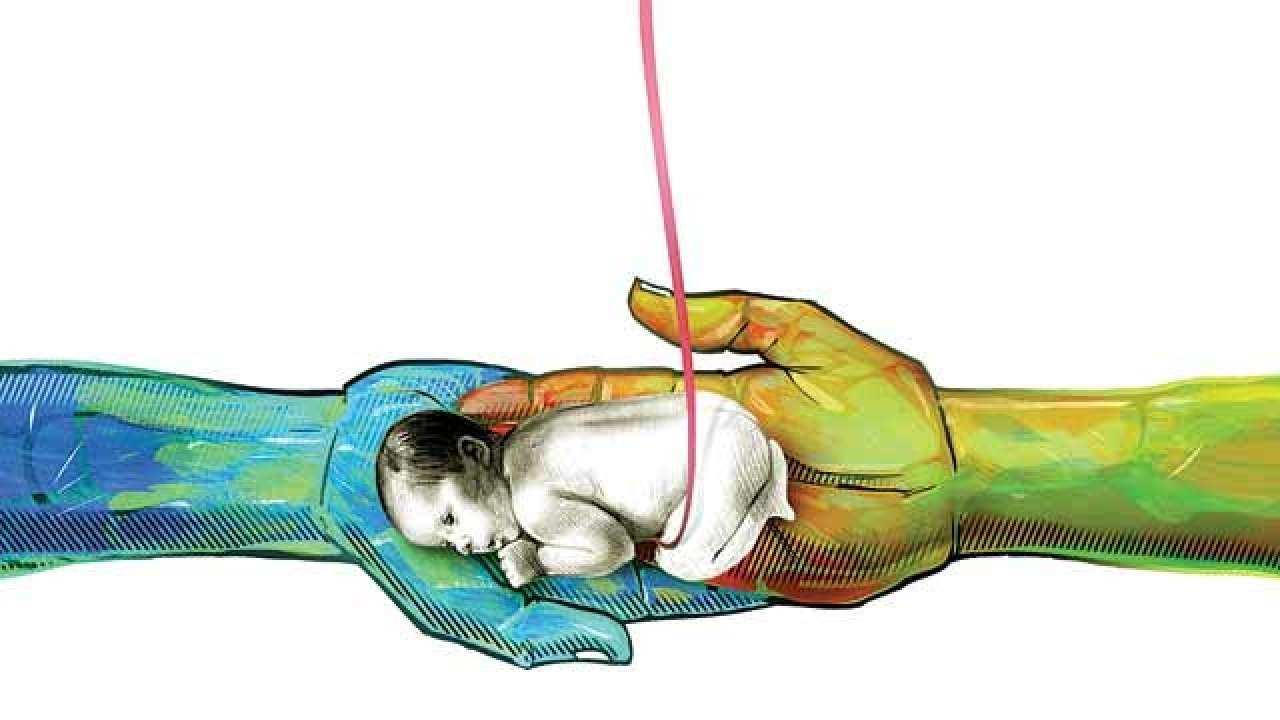DNA Edit – Raising a family: Surrogacy Bill recasts spotlight on adoption

Surrogacy
Even before one delves into the merits and demerits of the Surrogacy (Regulation) Bill, 2016, passed in the Lok Sabha on Wednesday, it’s important to understand why such a bill had to be brought in in the first place. Commercial surrogacy in India had become the backbone of medical tourism, expanding into an industry worth over US $2 billion since it was introduced in 2002. With an industry this big in size, government supervision became difficult. On top of that, due to lack of proper legislation, both surrogate mothers and intended parents were exploited by middlemen and commercial agencies who earned humongous profits.
Though the Indian Council of Medical Research issued guidelines in 2005 for accreditation, supervision, and regulation of assisted reproductive technology (ART) clinics, these guidelines were repeatedly violated. Let’s for a moment keep aside the argument that commercial surrogacy results in the devaluation of women and children and the eventual degradation of society, and focus on how wombs of economically vulnerable were rented for brisk business. For as little as $160 a month, infertile couples from abroad could get a woman to carry a child. With little awareness about the pitfalls of repeated pregnancies, many women queued up to rent their wombs immediately after delivery. There were several instances of surrogate mothers not even been paid.
The industry was run by haves — clinic owners and touts — who exploited widespread poverty to earn millions. There was also fear that a ban on commercial surrogacy would push the industry underground. But it had also become imperative to criminalise commercial surrogacy. The Surrogacy Bill not just bans the commercial aspect, but also gives a much-needed boost to adoption in India. Consider this: Barring legally married Indian couples who cannot conceive, none would have the option of surrogacy. Also, in case of medically proven infertile couples, only a close relative can be a surrogate. This, effectively, closes the door on all those ART clinics which made hay while the sun shone as only altruistic surrogacy will be allowed from now on.
In India, curiously, the concept of adoption hasn’t yet gained ground. According to the Central Adoption Resource Authority, under the Ministry of Women and Child Development, Government of India, only 3,276 children were adopted between April 2017 and March 2018. The previous year, the figure stood at 3,210. If bringing up children is the focus for couples who are medically challenged, then adoption can fill the void. By certain estimates, around 11 million children are abandoned in India every year and an overwhelming majority of them are girls. The new bill purports to give them hope. Having said that, the bill is not without flaws. For example, it can be considered regressive because the bill is aimed at heterosexual married couples. It denies homosexuals, single parents, and live-in couples the right to have children via surrogacy. Also, NCP MP Supriya Sule’s contention that “there must not be a five-year clause to prove infertility, when science and technology has progressed so much, why should the couple wait for that long a while to have a child through surrogacy” needs to be looked at.